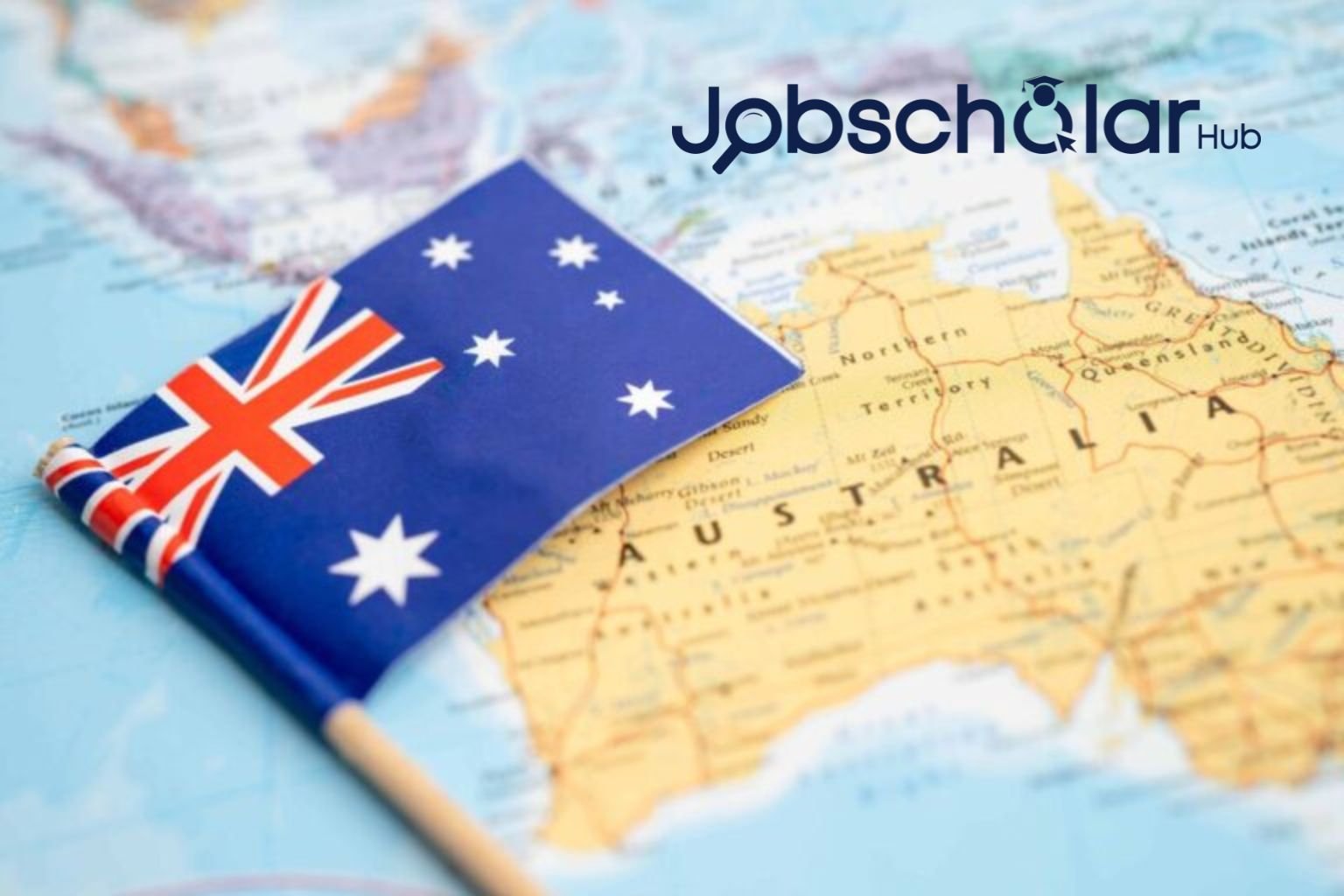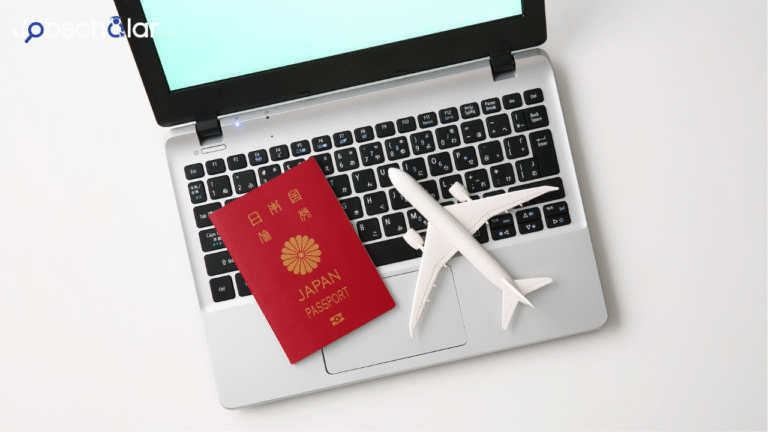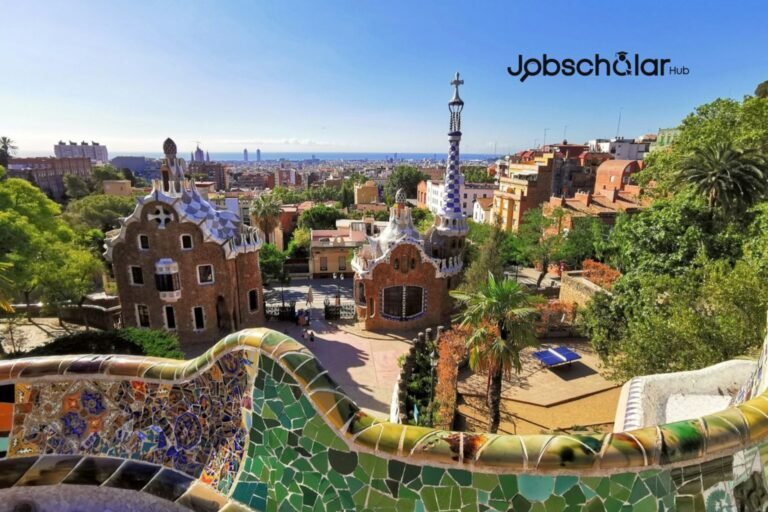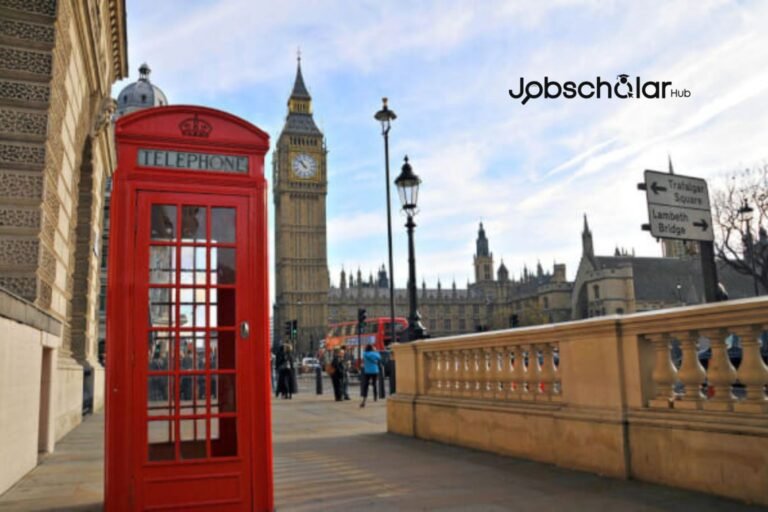So you are considering migrating to Australia? Perhaps you’ve read about the beautiful beaches, heard about the high pay, or just want to live in a place where even the wildlife seems as if it’s from a movie.
Whatever your reason may be, you are not the only one — by the thousands, people consider immigration to Australia every year, seeking better job prospects, world-class education, or perhaps just a new beginning.
However, the truth is that moving to a foreign country is a MASSIVE deal. It’s about more than just packing your bags and flying there. There are visas to secure, jobs to seek, homes to procure and an entirely new way of life to adapt to. The good news? This guide will take you through everything from start to finish.
From visa options to the cost of living, landing jobs, and settling in, we will cover every single question you have. In the end, you will have a crystal clear roadmap to begin your journey with confidence.
Table of contents
- What are the Different Ways of Migrating to Australia?
- How Much Do You Need to Move to Australia?
- What is the Cost of Living in Australia?
- Hidden Costs That People Don’t Think Of when Migrating to Australia
- How much should you save before migrating to Australia?
- How Do Migrants Get Jobs in Australia?
- Where to Search for Jobs in Australia?
- Which Types of Jobs Are in Great Demand in Australia after Migrating?
- How to make a resume for Australian Jobs?
- FAQs
- Conclusion
- References
- Recommendations
What are the Different Ways of Migrating to Australia?
The Australian government offers various visa categories, based on your skills, family ties and long-term plans. The most typical pathways are as follows:
Skilled Immigration (Work Visas)
If you have skills that Australia needs, this could be your best option. The government maintains an up-to-date Skilled Occupation List, covering employees such as engineers, IT professionals, nurses, and tradesmen.
The popular work visas under this category are:
- Skilled Independent Visa (Subclass 189) – No job offer required, just the points test.
- The Skilled Nominated Visa (Subclass 190) – Similar to the 189 visa, but require a nomination from an Australian state or territory.
- Skilled Work Regional (Subclass 491) – Must be sponsored by an Australian region and comes with a nomadic condition.
Pros
- Exempt from employer sponsorship (189)
- It is a permanent residency pathway
- Access to healthcare and social benefits
Cons
- Points-based system
- Processing times can be long.
You can also read: Why Migrants Relocate to the US? Incentives and Opportunities
Family Migration
If you have family members in Australia, they can sponsor you. This includes spouses, children, parents and sometimes even some relatives.
Some popular family visas in this category are-
- Partner Visa (Subclass 820 & 801 / 309 & 100) – For individuals who are married to or in a de facto relationship with an Australian citizen or PR.
- Parent Visa (Subclass 103 & 143) – For parents of Australian citizens or PR holders (may take years to process).
- Child Visa (Subclass 101 & 802) – For children of Australian citizens or PR holders
Pros
- Simpler process
- Pathway to permanent residency
Cons
Some visas can have a very long wait period (Parent Visa can take up to 10 years and more)
Check out: Netherlands Work Visa Requirements 2025
Student Visa (Subclass 500)
The majority begin their journey with a student visa. You can apply for a Student Visa (Subclass 500) that permits you to study and work in Australia part-time if you join an Australian school or college.
Pros:
- Excellent option for Australian education
- Enables you to work 24 hours per week while studying
- PR Pathway for in-demand courses such as nursing, IT, engineering, etc.
Cons:
Can be costly, and you may also need to keep studying.
Business & Investor Visas
If you have a successful business background or want to invest in Australia, a Business Innovation and Investment Visa (Subclass 188 & 888) might be an option.
Pros:
- Candidate for PR
- Good chances to grow your business here in Australia.
Cons
Requires significant investment (minimum investment amount).
Humanitarian & Refugee Visas
You can apply for a Humanitarian Visa (Subclass 200-204) or Protection Visa (Subclass 866) if you are being persecuted in your home country. These visas are only for refugees or people seeking asylum.
Pros: Protection and public relations in Australia.
Cons: Very strict requirements and processing time is very long.
Read also: Family-Based Immigration in the U.S- Sponsorship & Visa
How Much Do You Need to Move to Australia?
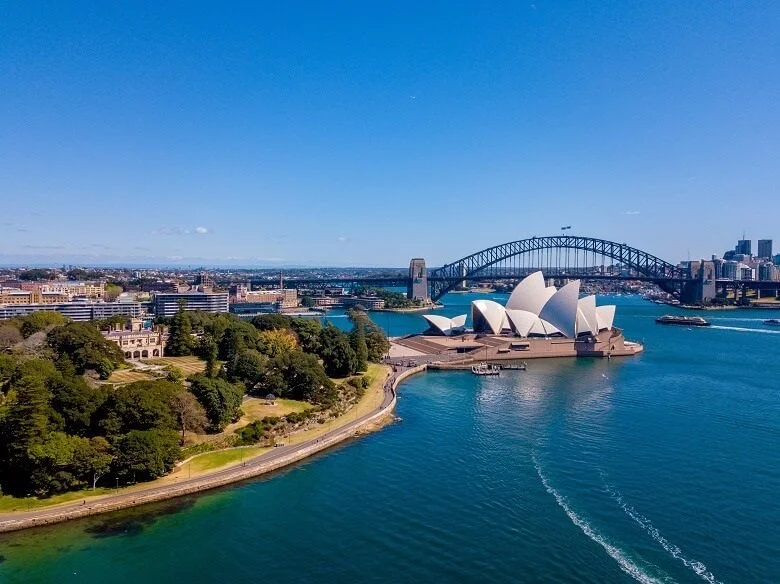
Moving to Australia is an adventure, but you must up your budget because, to be frank, it is not cheap. The cost varies based on your visa type, where you want to stay and your lifestyle. Let’s break it down.
Visa Costs
There are price tags for different visas. Here is what you will spend on some of the common visas:
- Skilled Independent Visa (Subclass 189): AUD 4,640
- Partner Visa (Subclass 820 & 801): AUD 8,850
- Student Visa (Subclass 500): AUD 710
- Parent Visa (Subclass 143 – Contributory): AUD 47,825 (yes, it’s THAT expensive)
There are additional costs: medical exams (AUD 400), police clearance (AUD 50-100), and a visa agent fee (if you choose to hire one) (AUD 2,000-5,000).
Proof of funds – What’s the right amount in your bank?
For certain visas (eg: student and skilled visas) you need to show that you have enough funds to support yourself.
- For a Student Visa (Subclass 500), you should have a minimum of AUD 24,505 per year.
- Skilled Worker Visa: AVERAGE AUD 5,000-10,000 RECOMMENDED
- Parent Visa: No specified amount but you are going to be waiting years for this, so be financially prepared.
See also: Working in Australia: Complete Guide
What is the Cost of Living in Australia?
The cost of living varies by location. Sydney and Melbourne are most expensive, while places such as Adelaide and Brisbane are cheaper.
Here’s a generic monthly budget for one person:
- Rent (1-bed apartment, city centre): AUD 2,500 (Sydney) / AUD 1,700 (Brisbane)
- Utilities (electricity, internet, water): AUD 200–300
- Groceries: AUD 500-700
- Public Transport: AUD 160-220
- Health Insurance: AUD 100-150
- Entertainment & Miscellaneous: AUD 300-600
Total Estimate Monthly Cost:
- Sydney: AUD 4,000+
- Melbourne: AUD 3,500+
- Brisbane/Adelaide: AU$2,800-3,200
Tip: You’ll pay more if you’re relocating with family.
Hidden Costs That People Don’t Think Of when Migrating to Australia
There are additional costs that catch many migrants by surprise. Here are a few hidden costs to be aware of:
- Rental Bond ( Deposit) : Generally 4- 6 weeks ` rent in advance before you can move in.
- Car Registration Proxy: When you get a car, the registration is likely AUD 700-1,200/year.
- Childcare Costs: If you have children, daycare will cost you AUD 100-150 per day.
- Flights & Moving: A one-way flight from many countries to Australia is approximately AUD 1,500-3,000. If you are shipping personal belongings, expect to pay thousands.
How much should you save before migrating to Australia?
Here’s a conservative estimate of how much you need to save before you move:
- Individual: Minimum of AUD 10,000-15,000
- Couple: Approximately AUD 20,000-25,000
- Family of four: Approximately up to AUD 30,000-40,000
This will see you through your first few months until you find a job and settle in.
If you’re thinking about moving to Australia, it’s not cheap, but good planning make it easier. Now you’ve got a sense of the costs, let’s get into how to get a job in Australia as a migrant!
Read also: 5 Australian Companies That Sponsor Work Visas
How Do Migrants Get Jobs in Australia?
The job search in a new country can be daunting but don’t worry. If you take the right steps, you’ll have a better chance of being able to find a job before or soon after you land in Australia.
Do You Need to File a Work Visa First?
Yes and no. Some jobs require you to have a visa already; for others, companies will sponsor you. The best way to check? Look at job listings. Some will note whether sponsorship is available.
Here’s how it works:
If you have a work visa (Subclass 189, 190, or 491), you will be applying for jobs just like any Australian.
However, if you are not on a work visa, you’ll need a company to sponsor your Temporary Skill Shortage Visa (Subclass 482) or another employer-sponsored visa.
If you meet the requirements, go for a Skilled Visa straight away so you don’t have to depend on sponsorship.
Read: H4 Visa Interview Questions: Avoid These Mistakes!
Where to Search for Jobs in Australia?
Here are the best job search websites in Australia:
- Seek (www. seek. com. au) – Australia’s largest job site
- Indeed (au. indeed. com) – Covers all industries.
- LinkedIn (www. linkedin. com)- Best for networking and job hunting.
- Australian Government Job Portal (www. jobs. gov.au) – Government and skilled worker jobs.
- Gumtree Jobs (www. gumtree. com. au) – Suitable for casual and trade work.
Also look at employer websites directly if you’re searching for high-demand jobs like nursing, IT or construction.
Which Types of Jobs Are in Great Demand in Australia after Migrating?
Australia has a Skilled Occupation List for jobs that are in high demand. If you’re in one of these spaces, you will have a higher likelihood of landing work:
- Healthcare & Nursing (Doctors, Nurses, Aged Care Workers)
- Engineering (Civil, Electrical, Mechanical Engineers)
- IT and Tech(Software Developers, Cybersecurity, Data Analyst)
- Trades (Plumbers, Electricians, Carpenters, Welders)
- Education (Teachers and others in child care)
- Agricultural Work (Farm Workers, Fruit Pickers)
Even if your job isn’t on the list, there may still be work for you, particularly in the hospitality, sales, and retail industries.
Check out: How to Apply for a Work Visa in Australia
How to make a resume for Australian Jobs?
Australian employers favor concise CVs. Here’s how to distinguish yours from others:
- Write an Australian-Style Resume: No long paragraphs—use bullet points only.
- Stick to 2 Pages Maximum: Keep it to your most recent and relevant experience.
- Add an Australian Phone Number: If you aren’t in possession of an email that Australian employers can communicate with you.
- Name Visa Status: If you have open work rights, state it clearly on your resume.
- Tailor Each Application: Include languages spoken in your CV, for example.
Tip: Need help? Websites like Resume.com can help.
Should You Have A Cover Letter?
Yes! Australian employers anticipate a cover letter. Short and sweet (1 page max) and address:
- Why you want the job
- How your skills match
- Your visa status
Tip: Not heard back after applying? Email a gentle reminder. It signals to employers that you’re serious.
What If You Don’t Get a Job Immediately?
Don’t stress! Here are some backup plans:
Start with some casual work — Hospitality, retail and warehouse jobs tend to hire quickly.
Consider doing an internship or volunteer work – This gives you Australian work experience.
Network! – Importantly, most jobs in Australia are never advertised. Be part of Facebook groups, LinkedIn or Meetup events to connect.
Read: Interview Tips: How to Stand Out and Get Promoted
Life in Australia for New Migrants: What to Know
So okay, you have your visa, perhaps even a job now and you’re moving. But what’s real life like in Australia? Let’s break it down.
Work Life Balance & Lifestyle
Australia is known for its laid back lifestyle. People do work hard, but they also love the weekend — beach, the mountains, barbecue with friends, etc.
Hours Worked on average: 38 hours a week (The most popular jobs work from 9 AM – 5 PM).
Minimum Wage: AUD 23.23 per hour (one of the highest in the world).
You will enjoy the work-life balance in Australia especially if you are your immigration is from a high-stress country
Cultural Differences – What to Expect
Australian culture is direct and friendly. A few notes to remember:
People are relaxed — First names are used, even for your boss.
Be on time — It’s rude to arrive late.
Aussies love small talk, particularly about sports, weather and weekend plans.
No tipping culture – Unlike in the US, there’s no expectation of tipping.
Housing – Where To Live?
Choosing where to live depends on, really, your budget and lifestyle.
Most Expensive Cities:
Sydney & Melbourne — Elevated salaries and extremely high rent.
More Affordable Cities:
Brisbane, Adelaide & Perth – Cheaper rent, fewer opportunities.
Public Transport: Buses, trains and trams all exist, but it’s not good everywhere
Driving: Most Australians have their own cars, and you’ll need an Australian driver’s license after a few months of migrating.
Tip: If you’re in Sydney or Melbourne, the public transport is decent. In smaller cities? You’ll probably need a car.
Friends and Feeling at Home
Moving to a new country can be lonely at first but don’t worry—you’ll settle in! Here’s how:
Join local Facebook groups – There are groups for migrants, job seekers, hobbies, etc.
Attend social events – Meetup. at com and community centers frequently host free events.
Explore! – Go to beaches, national parks and city events.
Tip: Australians are savvy, but you have to take the first step. Come say hello, ask questions, and get involved!
FAQs
Costs do depend, but plan for AUD 5,000 – 10,000 for visas, flights & settling in
Yes! The majority of visas have a dependent option, meaning you can include your partner and kids in your application.
Processing times differ: some visas take weeks. Others may take months. Visit the immigration website for further updates.
Yes! Certain skilled visas- like a Subclass 189 that allow you to migrate without employer sponsorship.
Absolutely, unless you qualify for Medicare. Most migrants are required to obtain private health insurance prior to arrival.
Conclusion
It takes time to adjust — life in Australia is: awesome. The takeaway is to be patient, plan your budget, and try, try, try.
There will be challenges — yes — but thousands of people move successfully every year, and so can you! Be patient, be prepared, and take it day by day. Next thing you know, you’ll be living your best life in Oz.
Want to know more? Leave your questions in the comments!
References
- SableInternational– The Beginners Guide to Migrating to Australia
- Live In Melborne– How to Migrate to Australia
- VisaGuide.World-Migrating to Australia


